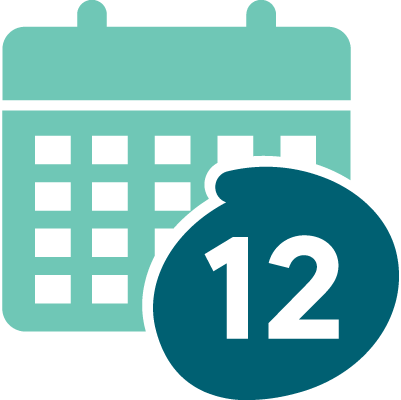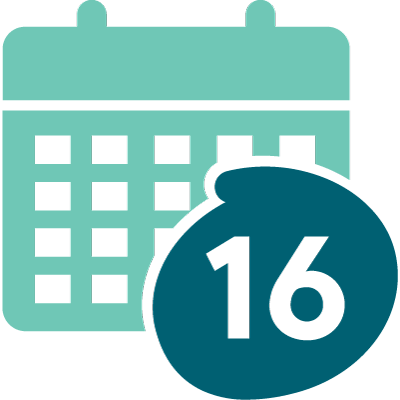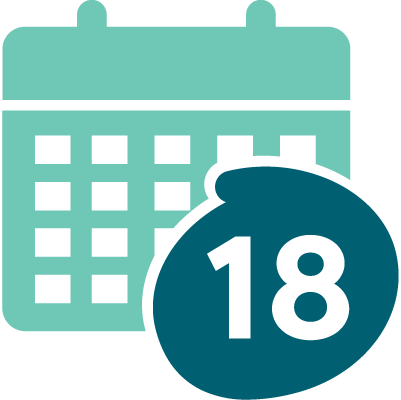How Paid Leave works
How Paid Leave works
Paid time off for your employees when it's needed most
Who is eligible for Paid Leave?
Paid Family and Medical Leave gives Washington employees a way to take paid time off to care for themselves or a family member. You don’t have to worry about managing your employees’ claims or figuring out if they are eligible. Employees apply for Paid Leave directly with Employment Security Department.
Benefits do not increase your premium.
As an employer, you are not penalized for any employees, current or previous, taking their Paid Leave benefits. Your premium rate will not increase when your employees use Paid Leave benefits.
Premiums, collected from employees and employers through quarterly reporting, fund the Paid Leave program. Premium rates are adjusted each year in January for wages paid in the calendar year.
Your employees are eligible to use Paid Leave if:
1. They have worked enough hours to qualify for Paid Leave.
Nearly every Washington worker can use Paid Leave as long as they’ve worked at least 820 hours during their qualifying period. The 820 hours can be at one job or combined from multiple jobs.
That means if your employee works for another business at the same time, the hours from both jobs are added together to determine eligibility for Paid Leave.
2. They or a family member experience a ‘qualifying event.’
Qualifying events include serious illnesses or injuries that prevent someone from work, a new child joining a family, or certain military events.
Some Washington workers are not eligible for Paid Leave, including:
- Federal employees
- Self-employed people (unless opted in)
- Note: Corporate officers are not self-employed
- Employees of tribally-owned businesses on tribal land
Paid Leave’s collective bargaining agreement provision expired Dec. 31, 2023. Workers who were previously excluded from Paid Leave because of a Collective Bargaining Agreement (CBA) are eligible for the program beginning Jan. 1, 2024.
You can NOT require an employee to use other leave before using Paid Family and Medical Leave.
Your employee can receive short-term disability at the same time as Paid Leave, but short-term disability plans can have restrictions. Make sure your employee understands your short-term disability plan’s requirements related to Paid Leave benefits.
Job protection:
If you have 50 or more employees, you may be responsible to provide job protection for your employees on Paid Leave. Employees are eligible for job protection for the duration of their leave if they have worked for you for at least 12 months and have worked 1,250 hours (about 24 hours a week) in the year before the first day they use Paid Leave. Your employee may also be protected under other local, state and federal laws. There are some circumstances where you can deny job restoration.
Employees using leave under the federal Family and Medical Leave Act (FMLA) or other types of leave does not reduce their available Paid Leave benefit. It is possible for an employee to use multiple leave options consecutively.
Continuation of health insurance:
You must maintain existing health benefits for an employee using Paid Leave benefits if they have at least one day of overlap with leave taken under the federal Family and Medical Leave Act.
If your employees are responsible for paying some of the health insurance premium, you can require that they continue to pay their share. Nothing prevents you from maintaining your employee’s benefits while they use Paid Leave.
You must notify your employees of Paid Leave
Required: You must display a workplace poster.
Required: You must notify your employees in writing when they have been away from work for seven consecutive days and for reasons that could be covered by this program. You have five days to provide this notice.
Optional: We offer have a paystub insert you can share with employees to help them understand why premiums are deducted from their paycheck.
If you’ve been paying your employees’ share of premiums and decide to start withholding from their pay instead, you must notify them in writing at least one pay period before you start the withholding. You cannot retroactively withhold premiums for past pay periods.
Benefit application process:
1. Employee notifies you they plan to take leave – 30 days prior, if possible: If your employee’s leave is expected (for example, they’re expecting a baby), they must give you written notice at least 30 days in advance. If the leave is unexpected (for example, their spouse is in a serious car crash), they must give you written notice as soon as they can. The written notice should let you know they need to use Paid Leave and about how long they expect to be out. Emails, text messages and notes all count as written notice.
2. Employee applies for Paid Leave. When your employee has a qualifying event, they’ll apply for leave directly with the Employment Security Department.
Employees can backdate their claim for a ‘good cause’ reason that prevented them from applying for Paid Leave immediately after their qualifying event. A ‘good cause’ reason can be the result of a serious health condition, a period of incapacity or because of a natural disaster.
3. We’ll notify you of your current employee’s application: The notice will include your employee’s name, leave start and end dates, and instructions for disputing the claim if you need to. You’ll have 18 days to contest an employee’s claim after receiving this notice.
4. We’ll notify you and your current employee of the decision we make: We will not provide information about your employee’s typical workweek hours or weekly benefit amount.
If you have full access to your Paid Leave employer account, you can access information about your employees’ benefit applications and weekly claims.
We share information with you while your employee is on leave.
If you have full access to your online account, we share:
- Employee name
- Employee’s date of birth
- Date the record was last updated
- Application date and requested leave dates
- Leave type – Medical or Family
- Decision and approved leave dates
- Our decisions on that employee’s submitted weekly claims:
- WW = Waiting week
- Yes = Approved and paid week
- No = Denied or unpaid benefit applications and weekly claims.
How much time
While your employee is on leave, they may take their approved leave in full weeks or intermittently as needed.
When employees are approved for leave, their approved leave dates are based on their needs. They have a limited number of hours to use during their leave. They may exhaust their hours before their leave end date or take their leave intermittently. Once their leave is exhausted, their job protection rights under Paid Leave are also exhausted.
If your employee uses all of their Paid Leave benefits for their claim year, they must wait until their claim year expires to apply for benefits again.
Your employees must file weekly claims to claim Paid Leave benefits.
Your employee will receive up to 90 percent of their weekly pay, up to the maximum weekly benefit amount, which is updated yearly.
Maximum weekly benefit amounts. The maximum weekly benefit amounts for 2020 – 2025 are:
- 2025 = $1,542 / week
- 2024 = $1,456 / week
- 2023 = $1,427 / week
- 2022 = $1,327 / week
- 2021 = $1,206 / week
- 2020 = $1,000 / week
Your employee’s maximum weekly benefit amount won’t change if they apply for or begin their leave in one calendar year then their claims continue into a new calendar year.
You can offer supplemental benefits to your employees.
If a worker receives wages or paid time off at the same time as Paid Leave, it will reduce their benefit payment, unless their paid time off is designated a ‘supplemental benefit.’
For more information about Paid Leave benefits:




